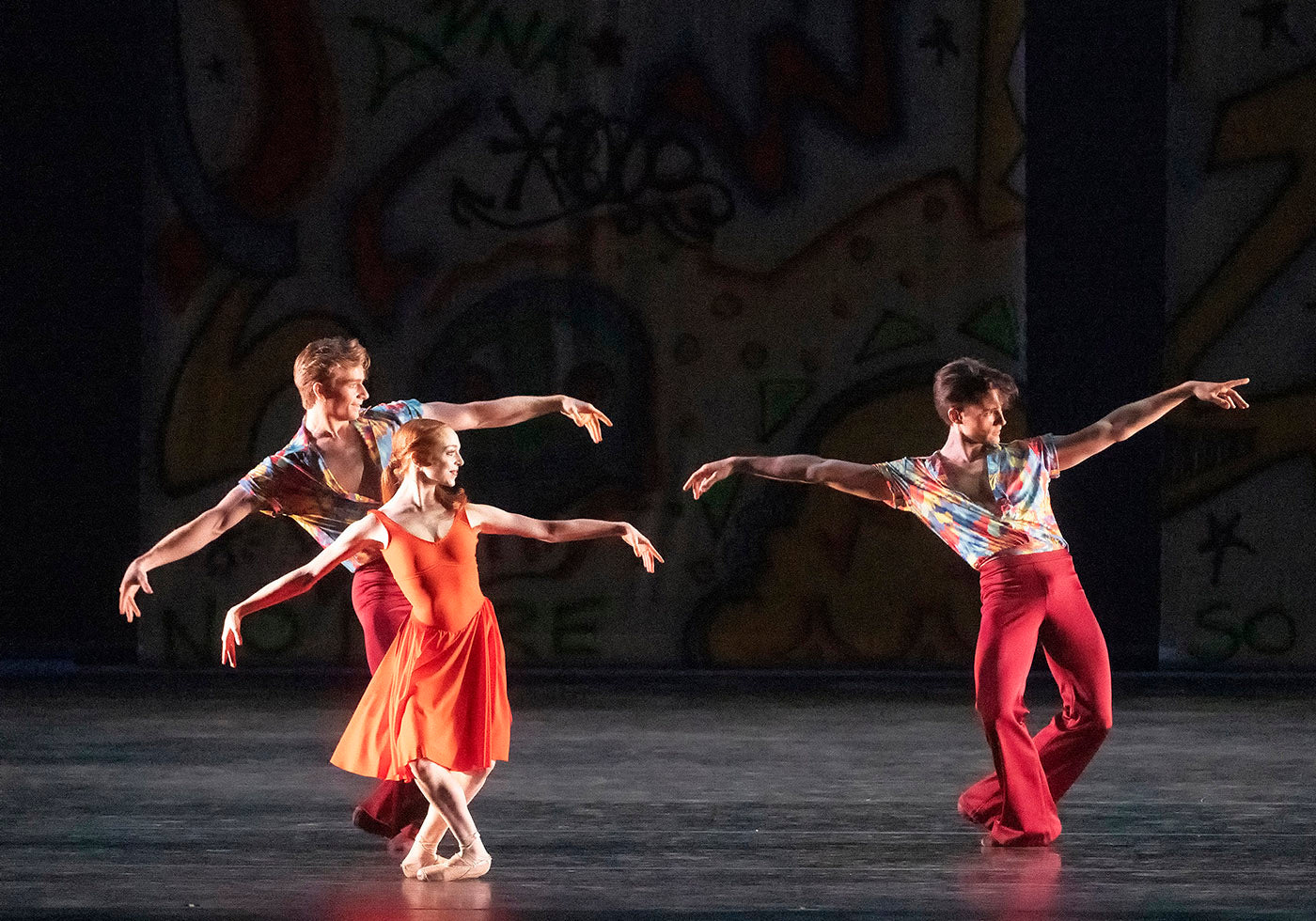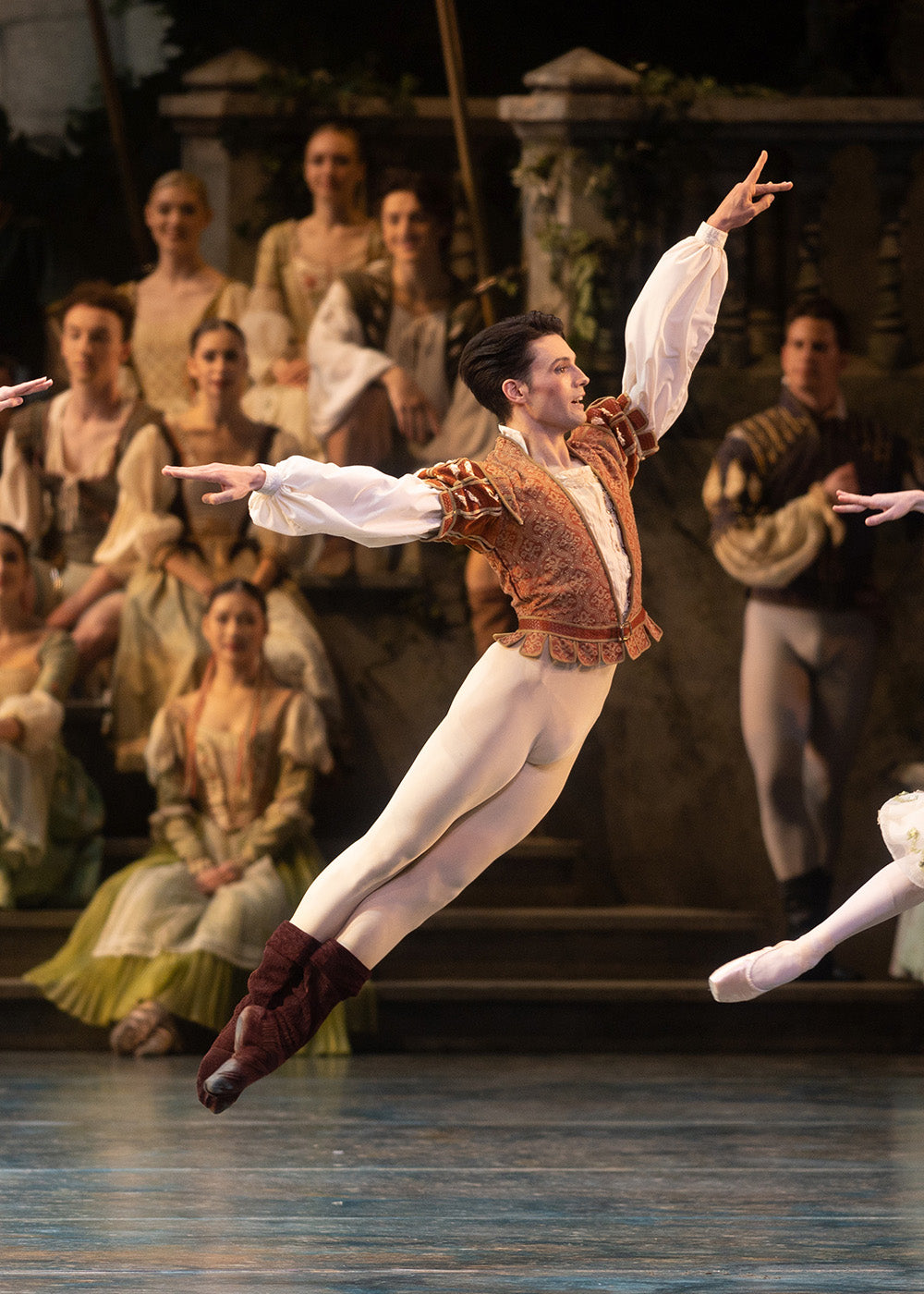Who else inspired you at ABT?
Alexei Ratmansky, first and foremost. When I joined ABT, I would say he was the first person that took notice of me when I was 19. I was called upon at the last minute to be in his “Tempest” [2013], as the island spirit. That was a pretty big deal, [with] a lot of dancing, a lot of partnering. I applied myself, had a couple good shows, and from there, he paid attention to me a bit more.
When he was doing a reconstruction of “Sleeping Beauty” [2015], I got put in a supporting character role as a herald, and through the entire three hours, I didn’t have one dancing step. But I applied myself as someone wanting to work on stagecraft, artistry, musicality, [and] Alexei acknowledged me by casting me in a slew of soloist roles.
He would take multiple chances on me [and] say, “I see the work you give. I see your commitment. Now I’m going to challenge you with this.” He stepped up and was in my corner to get me onstage.
In “Of Love and Rage,” Mithridates was my first principal role, and that was cementing my convictions that I could make it at ABT—with people like Alexei that were going to get me there. He’s a dear friend and I speak with him as much as I can. I have nothing but love for him.
What roles would you like to dance in the future and what’s it like having a role created on you?
I’ve always been drawn to heavy narrative ballets—[John] Cranko and [Kenneth] MacMillan. I would love to perform des Grieux in Macmillan’s “Manon.” It’s one of my favorite classical ballets, and also Crown Prince Rudolph in his “Mayerling.” I love to dig deep into those roles, because the intensity in performances like that is some of the greatest satisfaction you can have as a dancer.
I adore Petipa’s ballets for technical prowess, but sometimes the characters fall a little flat. Franz in, “Coppélia,” falls in love with a doll. Albrecht [in “Giselle”] is a two-timing cad, but I would love to do Albrecht one day. Even Romeo I would love to perform [to] Profkofiev’s music; there’s also [beautiful] partnering.
It’s always a huge privilege as a dancer, when a choreographer comes to stage something on you. For me, it’s such a rare feeling, a sensation. As classical dancers, we’ll never know what it was like to work with Petipa, Balanchine or Fokine. We only know what it’s like to learn their ballets, but not what it’s like to create them. When I get to work with choreographers, I can insert myself and my approach into a new performance that’s never been seen before. It’s a rewarding feeling.
Where do you see yourself in the next five to ten years?
I would love to continue working upwards at ABT. Now, the best work is to set a good example as a committed and diligent soloist [who] inspires audiences to keep coming back. I don’t plan on resting on my victory any time soon. After 11 years, I’m finally beginning my job.
What advice do you have for aspiring ballet dancers?
Remain committed, remain humble, remain receptive. But first and foremost, always know your worth. Sticking to my convictions didn’t mean putting up a block and having airs about how I danced. I was fully committed to being as successful as possible at ABT, and was prepared to meet any and all tasks.
It’s the age-old thing: You say, “Jump,” and I say, “How high?” Anything that’s been asked of me, I accomplish it to the best of my capability, and move forward from there. Keep an open mind and never be too proud or too unwilling to learn more about your capabilities as a dancer, and always be open to reception—to corrections. Be willing to put in more work than what you think may be possible.





comments